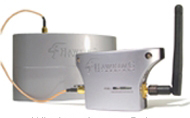Easy ways to improve your Wi-Fi performance

Last week a friend called me to report that her router had was down again. She asked what she should do to fix the problem and the only advice I could give (without actually looking at the set up) was to reboot. She doubtfully said she’d give it a try, and that she’d report back. A few minutes later she e-mailed to say the router was back online.
Routers are kind of like PCs: They love the attention of an occasional reboot. That’s the first thing that I do if my router is misbehaving. And if that doesn’t work, I reboot the cable modem, router, and PC (in that order).
I sent my friend this short piece from Web Worker Daily. It has some good general tips that we often forget to implement, such as making sure that your router and access points are positioned optimally. I like the suggestion that you replace your external antenna with an omnidirectional antenna. I have done this on one of my networks and saw sizable extension in range. If your router is near an outside wall, you should consider a directional high-gain antenna. That’s because a lot of your signal signal will head straight outside, and a directional antenna will enable you to point the signal where you need it to go. But the best way I’ve found to extend range is by using a signal booster. I installed the Hawking Hi-Gain WiFi Signal Booster on my network and got a measurable result. It wasn’t the 600 percent that Hawking provisionally promised, but it made a really big difference. 
Another tip I’d add to Web Worker’s Daily checkup list is to upgrade the router’s firmware. You should also experiment with changing the channel. Most routers are set to channel 6 as a default. There are three nonoverlapping channels (1, 6, and 11) in the United States; these are the safest to use if you have multiple access points on your WLAN. If you’re having trouble with interference from cordless phones or other household devices, changing the channel might improve your performance.